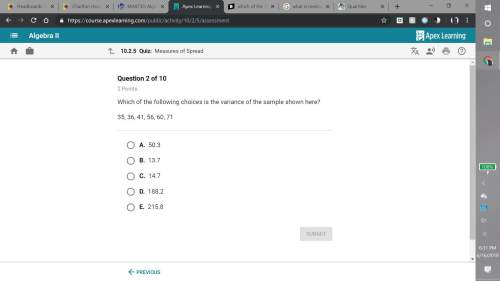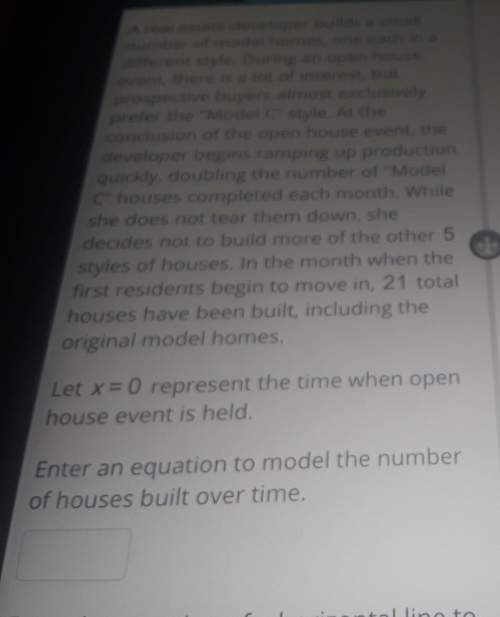
Mathematics, 04.12.2021 06:30, alvarezmrs1913
I will get 100 points to the first person to help me with this
You're playing a game of pool and it's your turn, but you have no direct shots. To make any shot, you will need to bank the cue ball (the white ball) off the side of the table before it hits your ball.
That means that you hit the cue ball so that it bounces off the side and then hits your colored ball, moving it in the direction of a pocket (hole). The angle that the ball hits the bumper is equal to the angle that it bounces off the bumper.
The cue ball is 18 inches from the top bumper (side of pool table) and 50 inches from the right bumper. The dimensions of the pool table are 96 inches in the horizontal direction by 46 inches in the vertical direction.
Use the illustration of the table and what you know about similar triangles to plan your shot.
1. Which ball did you select? Red, yellow, or blue? (1 point: 1 point for selection)
yellow
2. Construct a triangle by performing each of these steps. (6 points: 1 point for each step)
a. Label the cue (white) ball A.
b. Identify the pocket (hole) that you want your ball to go in. Label the center of this pocket E.
(Hint: Click on the ball in the image on the Pool Table Problem page to see how to make this shot.)
c. Draw a line segment that starts at E, goes through the colored ball, and ends at the other side of the table. Label the other endpoint of the segment C.
d. Draw a line segment from C to A (the cue ball). This segment will make the same angle with the bumper as CE.
e. Draw a perpendicular line segment from A to the same bumper (side of table) C is on. Label the endpoint B.
f. Complete triangle ABC by drawing the line segment BC.
3. Complete triangle CDE that is similar to ABC. Where does D need to be to create a similar triangle? Label vertex D and mark the angles that have the same measure. (2 points)
4. Assign a variable to name the length of BC and label it on your figure. To identify the lengths of AB, CD, and DE, use the dimensions of the pool table. Some lengths will include a variable. (4 points: 1 point for each label)
5. Use your similar triangles to set up a proportion. Solve this proportion for the unknown variable, the length of BC. (5 points: 2 points for the proportion, 3 points for the work)
6. To make your shot, you need the cue ball to hit point C. Find length CD and use it to identify the location of C in relation to one of the corner pockets. For example, if C is on the upper bumper, your answer might be: 15 inches to the right of the upper left pocket. Round your answer to the nearest inch. (2 points: 1 point for distance, 1 point for location)

Answers: 3
Other questions on the subject: Mathematics

Mathematics, 21.06.2019 18:30, yeet6942000
Complex numbers multiply √-4 * √-25 and show all intermediate steps. alternative notation is sqrt(-4) * sqrt(-25).
Answers: 1

Mathematics, 21.06.2019 19:00, carterkelley12oz0kp1
This task builds on important concepts you've learned in this unit and allows you to apply those concepts to a variety of situations. the task has several parts, each in its own section. mr. hill's seventh grade math class has been learning about random sampling and how it tends to produce samples that are representative of an entire population. they've also learned that if a sample is representative of the entire population, then estimates or predictions made based on the sample usually apply to the population as well. today, in class, they are also learning about variation in random sampling. that, although predictions and estimates about the population can be made from a random sample, different random samples will often produce slightly different predictions or estimates. to demonstrate this concept to his students, mr. hill is going to use simulation. he begins the lesson by explaining to the class that a certain university in the united states has a student enrollment of 19,100. mr. hill knows the percentage of students that are male and the percentage of students that are female. using simulation and random sampling, he wants his seventh grade students to estimate both the percentage of male students and the number of male students that are enrolled in this university. to conduct the simulation, mr. hill has placed one hundred colored chips in a bag, using the appropriate percentages of enrolled male and female university students. red chips represent males, and yellow chips represent females. each seventh grade student will randomly select twenty chips, record the colors they selected, and put the chips back in the bag. at this point, each seventh grade student will only know the results of their own random sample. before you begin, it's a good idea to look over each part to get oriented to the whole task. additionally, it's best to complete the sections in order, since they build on each other. finally, the work you complete will be a combination of computer-graded problems and written work that your teacher will grade. in some cases, you will need to complete work outside of the problem (in a word processing document or on paper, for example) and upload it for grading. to get started click work on questions. questions: 1. suppose a student reaches in the bag and randomly selects nine red chips and eleven yellow chips. based on this sample, what is a good estimate for the percentage of enrolled university students that are male? 2. suppose a student reaches in the bag and randomly selects nine red chips and eleven yellow chips. based on this sample, what is a good estimate for the number of enrolled university students that are male? 3. suppose a different student reaches in the bag, randomly selects their twenty chips, and estimates that 60% of the students are male. how many yellow chips were in their sample? 4. suppose a different student reaches in the bag, randomly selects their twenty chips, and estimates that 60% of the students are male. based on this sample, what is a good estimate for the number of enrolled university students that are female? 5. based on your dot plot, make a new estimate of both the percentage and number of males that attend this university. use complete sentences in your answer and explain your reasoning. 6. compare your estimates for the percentage of male university students from part a and part b. which estimate do you think is more representative of the population? use complete sentences in your answer and explain your reasoning. 7. once you have created both sets of numbers, complete the following tasks. in each task, make sure to clearly label which set you are identifying or describing. identify the elements of each set that you created. calculate the mean of each set. show your work in your answer. calculate the mean absolute deviation of each set. show your work in your answer. describe the process you used to create your sets of numbers under the given conditions.
Answers: 1

Mathematics, 21.06.2019 21:30, ayoismeisalex
Taylor wants to paint his rectangular deck that is 41 feet long and 24 feet wide. a gallon of paint covers about 350 square feet. how many gallons of paint will taylor need to cover the entire deck? round your answers to two decimal places when necessary.
Answers: 1
Do you know the correct answer?
I will get 100 points to the first person to help me with this
You're playing a game of pool and i...
Questions in other subjects:

Mathematics, 21.10.2020 02:01

History, 21.10.2020 02:01


Health, 21.10.2020 02:01

English, 21.10.2020 02:01


History, 21.10.2020 02:01

Mathematics, 21.10.2020 02:01

English, 21.10.2020 02:01

English, 21.10.2020 02:01








